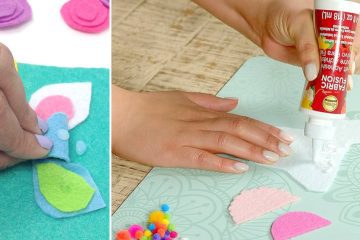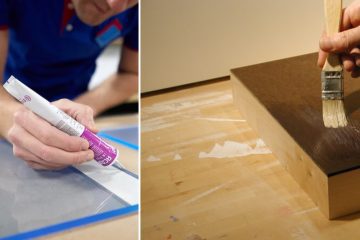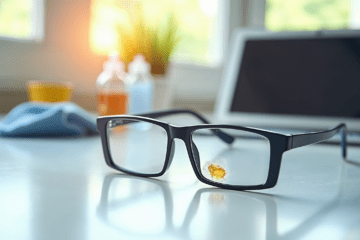Have you ever found yourself staring in disbelief at a stubborn glob of Gorilla Glue defying gravity on your pristine countertop? Don’t worry, fellow DIY warrior! This comprehensive guide will equip you with the tactics for how to get gorilla glue off countertop, restoring your countertops to their former glory.
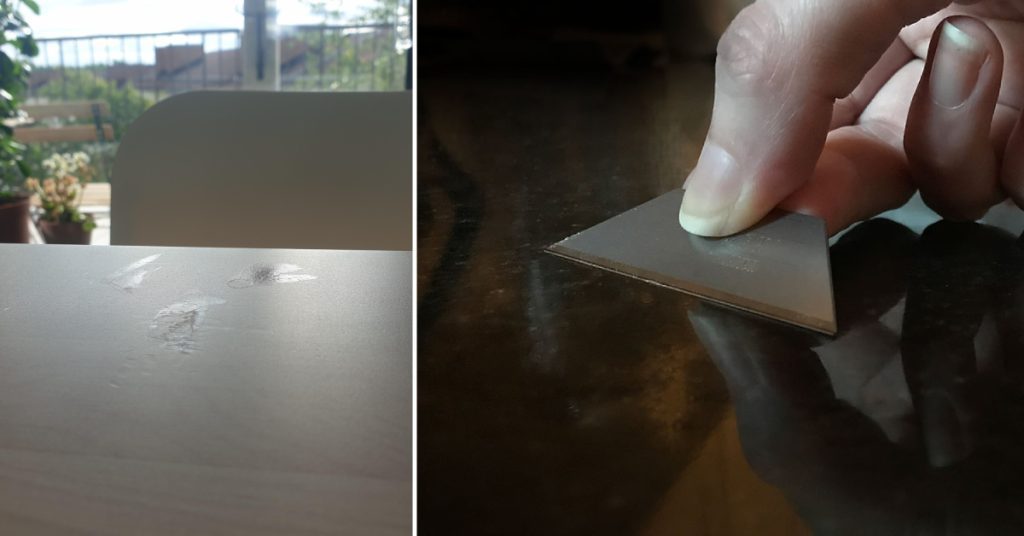
Key Takeaways:
- Understand Gorilla Glue’s adhesive properties and preparation steps
- Explore 5 removal techniques: mechanical, solvents, freezing, heat, and abrasives
- Follow restoration and prevention tips for long-lasting results
Unraveling the Gorilla Glue Enigma
Before we embark on our glue-busting quest, let’s demystify the beast we’re up against. Gorilla Glue is a polyurethane-based adhesive that expands upon exposure to moisture, creating an incredibly strong bond. Once cured, this glue becomes a formidable foe, resisting solvents and mechanical force with unwavering determination.
Preparation: Gearing Up for Battle
Removing Gorilla Glue requires a well-executed strategy and the appropriate arsenal. First, ensure a well-ventilated workspace and don your protective gear – gloves, safety glasses, and a respirator mask. Before unleashing any removal method, test it on an inconspicuous area to avoid causing collateral damage to your countertop’s surface.
5 Removal Techniques for How to Get Gorilla Glue Off Countertop
Just like a seasoned general, you’ll need to employ a variety of tactics to emerge victorious. From gentle persuasion to brute force, these methods cater to different countertop materials and the severity of the glue spill.
1. Mechanical Removal: The Gentle Approach
For small spills or dried glue spots, consider mechanical removal. Arm yourself with plastic putty knives, razor blades, or dull, non-abrasive tools. Gently scrape or chip away at the glue, exercising caution to avoid damaging the countertop’s surface.

2. Solvent-Based Removal: Dissolving the Bond
Solvents can be powerful allies in softening and dissolving Gorilla Glue’s tenacious grip. Here’s where you’ll need to deploy precision tactics:
- Acetone (Nail Polish Remover): Effective for non-porous surfaces like quartz, granite, and solid surface countertops. Apply acetone to a cotton ball, let it sit on the glue for a few minutes, then gently scrape away the softened adhesive.
- Isopropyl Alcohol (Rubbing Alcohol): Suitable for laminate and solid surface countertops. Follow the same application technique as with acetone.
- Commercial Glue Removers: Designed specifically for tough adhesives like Gorilla Glue, these specialized solutions can be game-changers. Follow the manufacturer’s instructions meticulously, and always test on an inconspicuous area first.
3. Freezing Method: Turning the Tables on Tenacity
For stubborn glue spots that refuse to budge, try freezing the glue with ice packs or cubes. Once frozen and brittle, gently chip away at the glue using a plastic scraper or dull knife. This method is particularly effective for those pesky, seemingly invincible glue remnants.
4. Heat Method: Melting Resistance (for select countertops)
If you’re dealing with heat-resistant countertops like granite or quartz, consider employing a heat gun or hair dryer set on low heat. Carefully apply the heat to the glue, allowing it to soften and become more pliable. Then, gently scrape away the glue with a plastic putty knife or dull tool.
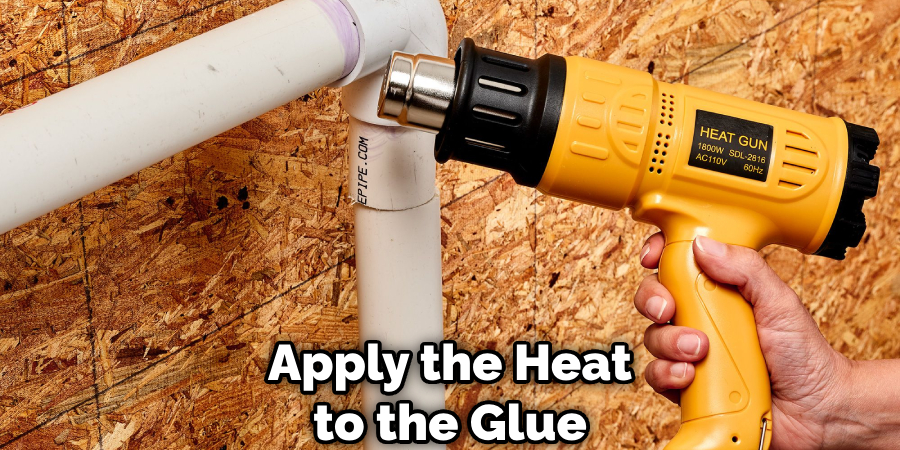
5. Abrasive Removal: The Last Line of Defense
In extreme cases, when all other methods have failed, you may need to resort to abrasive removal. Proceed with utmost caution, as this technique carries the risk of damaging the countertop’s surface. Use sandpaper or a Dremel tool with a gentle abrasive bit, and always test on an inconspicuous area first.
You Can Check It Out to Open Gorilla Wood Glue.
Restoration: Bringing Back the Shine
Once you’ve triumphed over the Gorilla Glue menace, it’s time to restore your countertop’s pristine beauty. Thoroughly clean the area with a mild detergent and water, removing any residual glue or solvent. If your countertop has a sealant or finish, you may need to reapply it to revive the surface’s protection and luster.
Prevention: Avoiding Future Glue Calamities
While accidents are bound to happen, taking preventive measures can minimize the risk of future Gorilla Glue spills on your countertops. Use Gorilla Glue with caution, following the manufacturer’s instructions to the letter. Work on a protective surface or disposable mat, and consider investing in precision applicators or bottles designed for controlled dispensing of the glue.
You Can Check It Out to Remove Krazy Glue From Countertop.

FAQs About How to Get Gorilla Glue Off Countertop
What Dissolves Gorilla Glue?
To dissolve Gorilla Glue, acetone is effective for uncured glue, while cured glue may require mechanical methods or stronger solvents like lacquer thinner or xylene. Always test these solvents on a small area first to avoid damage to the material and follow safety instructions meticulously.
Can Dried Gorilla Glue Be Removed?
To remove dried Gorilla Glue, you can apply acetone (found in nail polish remover) to soften it on most surfaces and skin, but be cautious as it may damage certain materials. For hard surfaces, sanding with fine-grit sandpaper or gently chiseling with a plastic scraper can effectively remove the glue, though care should be taken to avoid surface damage. Heating the glued area with a hairdryer might also ease removal by softening the adhesive. Commercial adhesive removers are another option, designed specifically for tough glues. If the glue is on your skin, soaking in warm soapy water can help loosen it for easier removal. Always test these methods on a small area first to ensure they won’t cause damage.
Will WD 40 Dissolve Gorilla Glue?
WD-40 can be an effective solution for dissolving Gorilla Glue on various surfaces. By applying WD-40 to the glued area and letting it sit for a few minutes, you can significantly loosen the glue, facilitating easier removal. It’s always wise to conduct a spot test beforehand to avoid any potential damage to the surface. This approach has been recommended by users across different forums, signaling its practicality in dealing with stubborn glue residues
Conclusion: Embrace the DIY Spirit
Removing Gorilla Glue from countertops may seem like a daunting task, but with the right techniques and a touch of perseverance, you’ll emerge victorious. Remember, safety should always be your top priority when working with solvents or abrasive tools. If you’re unsure about the best approach for your specific countertop material, don’t hesitate to consult a professional or seek guidance from the countertop manufacturer.
Embrace the DIY spirit, and tackle those glue spills with confidence. After all, what’s a home improvement project without a little adventure? Now, go forth and conquer those countertops, one glue glob at a time!
